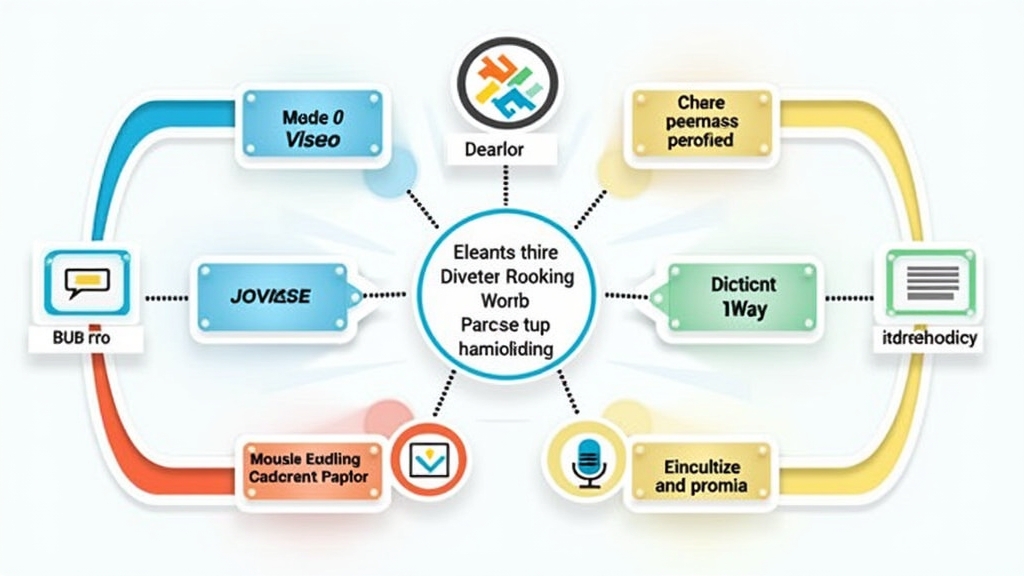Marketing: Content Repurposing Tips to Boost Your Strategy
Introduction
In the fast-paced world of marketing, content repurposing is a powerful strategy that allows you to maximize the value of your existing content. By transforming your original material into different formats, you can reach new audiences and enhance engagement. This not only saves time and resources but also helps maintain a consistent brand message across various platforms. In this article, we will explore effective tips for content repurposing that can elevate your marketing strategy and ensure you get the most out of every piece of content you create.
Understanding Content Repurposing
What is Content Repurposing?
Content repurposing involves taking existing content and adapting it into new formats or channels. For example, a blog post can be turned into an infographic, video, or social media post. The goal is to breathe new life into your work while reaching different segments of your audience who may prefer various types of media.
Benefits of Repurposing Content
Repurposing content offers several benefits. First, it saves time since you’re building on what you’ve already created rather than starting from scratch. Second, it increases visibility; by sharing your content in multiple formats, you can engage with more people across diverse platforms. Lastly, it enhances SEO efforts as fresh variations on existing topics can attract more traffic to your website.
Identifying Content for Repurposing
Analyzing High-Performing Content
To effectively repurpose content, start by analyzing which pieces have performed well in the past. Look at metrics such as views, shares, comments, and conversions to identify high-performing articles or posts. These successful pieces are often great candidates for transformation because they have already resonated with your audience.
Choosing the Right Formats for Repurposing
Once you’ve identified strong content pieces, consider which formats would suit them best. Think about where your audience spends their time—do they prefer videos over text? Would they appreciate infographics summarizing complex information? Tailoring the format to fit audience preferences will increase engagement and effectiveness.
Effective Strategies for Content Repurposing
Transforming Blog Posts into Other Formats
One effective strategy is converting blog posts into other formats like podcasts or videos. For instance, if you have a detailed article about digital marketing trends, consider creating a short video summarizing key points or recording a podcast episode discussing those trends in depth.
Creating Infographics from Research Data
Research data often contains valuable insights that can be visually represented through infographics. By turning statistics and findings from reports into engaging visuals, you make complex information easier to digest while attracting attention on social media platforms.
Leveraging Video and Audio Content
If you’ve created video tutorials or webinars before, think about how these could be broken down into shorter clips for social media or even transcribed into blog posts. This approach not only extends the life of your original material but also caters to different learning styles among your audience.
Tools and Resources for Successful Repurposing
Recommended Software and Applications
There are many tools available that can help streamline the process of repurposing content. Programs like Canva allow users to design eye-catching graphics easily while tools like Audacity enable audio editing for podcasts or voiceovers without needing extensive technical skills.
How to Use Analytics for Optimization
Using analytics tools such as Google Analytics helps track how well each piece performs after repurposing. Monitor metrics like user engagement rates and conversion statistics so you can refine future strategies based on what works best with your target audience.
Case Studies: Successful Examples of Content Repurposing
Brands that Have Mastered the Art of Repurposing
Many brands excel at repurposing their content effectively—take HubSpot as an example! They frequently transform their blogs into eBooks or webinars that provide deeper insights while catering to varied learning preferences among their followers.
Lessons Learned from Their Strategies
From these successful examples, one key lesson is consistency in branding across all formats used during republishing efforts; maintaining visual identity ensures recognition regardless of platform choice!
Common Mistakes to Avoid in Content Repurposing
Overlooking Audience Needs
One common mistake marketers make when repackaging old materials is forgetting about their target audience’s needs! Always keep them front-of-mind when deciding how best adapt previous works—this ensures relevance remains intact throughout iterations!
Failing to Update Information
Another pitfall occurs when outdated information gets reused without revision! Ensure any facts presented reflect current knowledge within respective fields; otherwise risk losing credibility amongst followers who expect accuracy!
Conclusion
In conclusion, implementing effective content repurposing strategies within marketing plans significantly boosts engagement levels while maximizing resource usage efficiently! By analyzing high-performing materials alongside understanding preferred formats among audiences—marketers stand poised ready capitalize upon opportunities presented through creative adaptations! Start applying these tips today so that every piece created continues delivering value long after its initial release!
📢 Explore More: Continue Your Journey!
If this article helped you understand how important it is to maximize existing materials through clever adaptations check out The Power of Visual Storytelling! It covers essential techniques for enhancing communication using visuals effectively.














![NEEWER 55W 18"/45cm Ring Light Kit [New Version], 5600K Dimmable ...](https://m.media-amazon.com/images/I/414QLqvZWLL._AC_.jpg)








